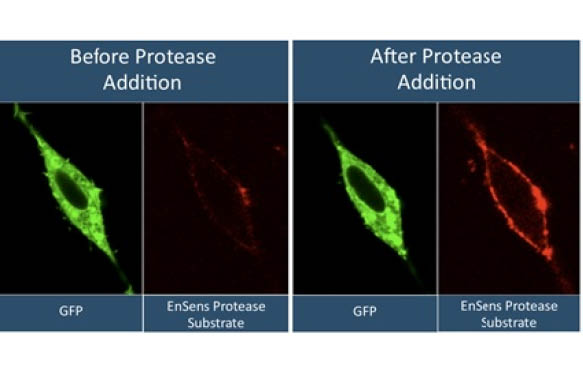Peroxisome Proliferator-Activated Receptors (PPARs) are ligand-activated transcription factors of the Nuclear Receptor superfamily. PPAR active compounds are of significant interest in multiple pharmaceutical domains.
In this post, we’ll highlight a clever in vitro experimental approach to screen the PPAR-specific activity of therapeutically significant PPAR agonists or antagonists.
The Nuclear Receptor family of PPARs includes three members, PPAR alpha (NR1C1), PPAR beta/delta (NR1C2) and PPAR gamma (NR1C3). They bind to PPAR-responsive DNA regulatory elements in the form of heterodimers with the receptor for 9-cis-retinoic acid (RXR). PPAR/RXR heterodimers have been firstly described to regulate the expression levels of numerous genes involved in physiological and disease cell processes. Nevertheless, each PPAR subtype shows distinct tissue distributions.
PPARs are far more than effectors in lipid metabolism. They play key roles in regulating biological processes such as energy balance, lipid metabolism, adipogenesis, cell growth, differenciation and apoptosis.
PPARs are involved in metabolic diseases, such as obesity / diabetes, atherosclerosis but are now also considered as central elements in inflammation diseases and cancers. Other diseases have shown to be modulated by members of the PPAR family. For example, PPAR gamma agonists exhibit a wide range of activities that positively influence the pathology of Parkinson Disease in experimental models. They have the capacity to be neuro-protective by regulating the expression of genes involved in neuronal survival processes. PPARs have recently been described to be involved in the endothelial progenitor cell maturation and myeloid lineage differentiation.
Recent studies have described PPAR isoforms as therapeutically relevant targets in epigenetics, oncology and now in cosmetology (anti-cellulite compounds).
Chemical compounds with PPAR activities are of significant interest in multiple medical domains. Various methods are available to detect PPAR variations such as antibody arrays. PPAR sub-family specific effects can now be quantitated through gene reporter cell-based assays.
Gene reporter cell-based assays to uncover PPAR activity in compound screenings
Measurements of specific PPAR ligand activities are of great interest in the screening of biologically active compounds.
The most powerful assays are cell-based models targeting PPAR alpha, PPAR beta/delta or PPAR gamma stably established with a luciferase reporter gene.
In these in vitro screening models, the luciferase reporter gene activity is driven by the yeast GAL4 transcription factor and the chimeric construct of the yeast GAL4DBD fused to PPAR sub-familiy Ligand Binding Domain.
The identification of compounds modulating PPAR activity and their subfamily selectivity is easily done.
Full dose-response studies carried out within a few days provide data for identification of agonists and antagonists with information of selectivity for PPAR alpha, PPAR beta/delta or PPAR gamma.



Using specific PPAR agonists and antagonists, tebu-bio’s PPAR stable reporter cell lines allow specific and sensitive measurement of PPAR ligand activities.
They provide a powerful high-throughput cell-based screening tool for characterizing PPAR ligands (agonists and antogonists) in pharma and cosmetic industries.
Interested in screening your compounds for PPAR activity ?
Discover tebu-bio’s PPAR screening assays as fee-for-services or leave a message below!




2 responses
I’d like to determine the (IC50) for 18 synthetic organic compounds on human PPAR-alpha (NR1C1) ligand binding assay in agonist mode and transactivation assay (EC50), if available.
How much does it cost per each sample per each assay?
Looking forward to your reply soon.
Dear Iman,
Thank you very much for your request.
We will send you a quotation by email very shortly.
Kind regards,
Isabelle